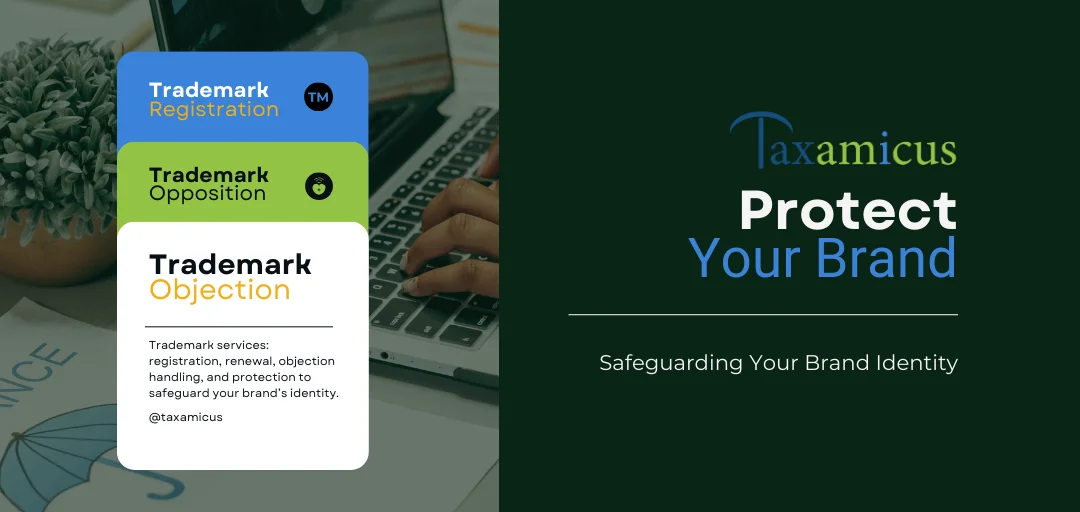In India’s competitive business environment, a brand’s identity is one of its most valuable assets. Trademark protection is an effective way to safeguard this asset, ensuring that your brand’s name, logo, slogan, and symbols are legally protected from misuse. In this blog, we’ll explore what trademark protection means, why it’s essential, and the steps you can take to protect your brand in India.
What is a Trademark?
A trademark is any symbol, name, or phrase that identifies and differentiates a company or product. Consider Tata’s logo or Amul’s slogan—these trademarks make these brands easily recognizable. Trademarks are a vital tool in building customer trust and distinguishing your brand from competitors.
Why is Trademark Protection Important?
Trademark protection in India offers several benefits:
- Brand Recognition: A unique trademark helps customers recognize your brand and build an association with its quality and values.
- Legal Rights: Registering a trademark grants you exclusive rights to use that symbol, name, or phrase within your business sector.
- Customer Trust: A protected and consistent brand symbol builds credibility and customer trust.
- Valuable Asset: A trademark is an intellectual property asset that can enhance your business value, especially if you plan to expand or license your brand.
- Protection Against Infringement: Registered trademarks protect you from competitors who might use similar identifiers, preventing customer confusion and safeguarding your brand’s reputation.
Types of Trademarks
In India, trademarks may include:
- Word Marks: Protect brand names or slogans, like “Mahindra.”
- Device Marks: Protect logos or designs, such as the ICICI Bank logo.
- Service Marks: Identify services rather than products, like Infosys for IT services.
- Certification Marks: Signify that a product meets a set standard, often used by industries.
How to Protect Your Trademark in India
1. Conduct a Trademark Search
Before registering a trademark in India, conduct a comprehensive search to avoid conflicts with existing marks. This search includes:
- Preliminary Search: Check search engines and business directories for similar marks.
- Comprehensive Trademark Search: Use the IP India website to search for registered trademarks in India and avoid potential conflicts.
2. File for Trademark Registration
Once your trademark is confirmed unique, proceed with registration through India’s Controller General of Patents, Designs, and Trademarks.
- Choose the Right Class: India’s trademark registration uses a class system to categorize goods and services. Select the correct class(es) for your business.
- Application Process: File online or at regional offices. Online filing is faster and easier.
3. Understand the Costs and Validity
Trademark registration fees vary based on your business type (individual, startup, company, etc.) and the number of classes selected. Trademarks in India are valid for 10 years, after which they must be renewed.
4. Monitor and Defend Your Trademark
It’s essential to monitor the market to ensure no one is infringing on your trademark. While the government registers trademarks, it doesn’t monitor infringements, so this responsibility lies with the trademark owner.
Common Challenges in Trademark Protection
Trademark Infringement: When another brand uses a similar name, logo, or design, causing customer confusion. In case of infringement, you may issue a cease-and-desist notice or take legal action.
Trademark Dilution: This occurs when an established trademark is used by others in non-competing fields, potentially weakening its distinctiveness.
Failure to Renew: Missing a renewal date results in a loss of protection, so mark your renewal dates to avoid any lapse.
Tips for Managing Your Trademark Effectively
- Consistent Branding: Ensure your brand is consistently represented across platforms to build a recognizable identity.
- Educate Your Team: Teach employees the correct usage of your trademark to prevent unauthorized variations that could weaken its effectiveness.
- Consider Multi-Jurisdiction Registration: If expanding internationally, consider trademarking in multiple countries. India is a member of the Madrid Protocol, allowing for easier international trademark registration.
Renewing and Updating Trademarks
As your business grows, your brand identity may evolve. Here are some tips to keep your trademark up-to-date:
- Renewal Process: Trademarks in India need to be renewed every 10 years. Mark these dates to maintain continuous protection.
- Expand Classes if Necessary: If your business diversifies, register your trademark under new classes to cover additional product lines or services.
- Revise Outdated Trademarks: As your brand evolves, consider updating trademarks to align with new designs or slogans.
Conclusion
Trademark protection is essential for safeguarding your brand in India’s marketplace. By registering and managing your trademark, you can protect your intellectual property, strengthen brand recognition, and build a loyal customer base. Following these steps can help you create a strong brand that stands out, grows, and remains legally protected over time.
Our Trademark Services

Trademark Registration
Trademark registration is the process of legally securing exclusive rights to a brand name, logo, or slogan, protecting it from unauthorized use and ensuring nationwide recognition for the owner.

Trademark Objection
Trademark objection occurs when the registrar raises concerns or questions regarding a trademark application, typically due to potential conflicts with existing marks or lack of distinctiveness.

Trademark Opposition
Trademark opposition allows third parties to challenge a pending trademark application, typically because they believe it may conflict with their own brand rights or cause market confusion.





